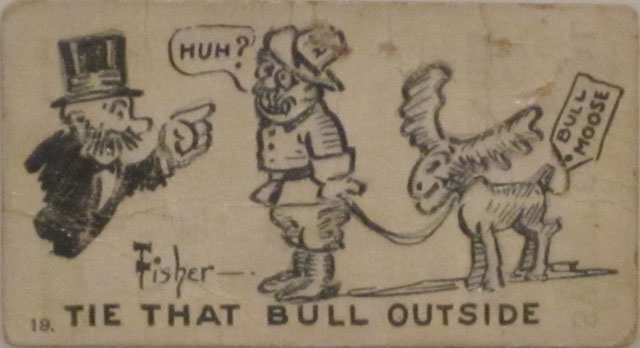Persuasion Optimization
There are many ways to optimize.
We optimize to align a site with search engine algorithms in order to gain higher rankings, which, in turn, leads to visitor traffic. Other forms of optimization occur after the visitor has landed on our pages.
One such optimization is called persuasion optimization.
After going to the effort of getting a visitor to land on our pages, the last thing we want them to do is to click back. We want them to read and act upon our messages.
There Are Many Ways To Persuade
Robert Cialdini, a Professor of Psychology at Arizona State University, identified six categories into which persuasion techniques commonly fall: reciprocity, consistency, social proof, liking, authority and scarcity.
We can use these techniques to optimize both our content and site design so that visitors are more likely to stay on our pages, and more likely to convert to desired action.
Whilst these techniques could be seen as being manipulative, it depends how they’re used. If used in good faith, they’re a natural part of the ritual involved in selling people on our point of view. On the other hand, being aware of these techniques makes them easy to spot if used against us!
1. Reciprocity
Reciprocity is when we give something to someone, and they return the favour. The act of reciprocity is so ingrained in our culture, it can occur whether the person asked for the favor or not, and whether the people involved previously knew each other, or not.
Reciprocity creates an obligation.
Examine your offer to see if you can give something of real value away. For example, some information product vendors give away large chunks of the product, or long trials. People may reciprocate by paying for the remaining sections or full product. They may have been less likely to do so if the vendor gave less value up front. Think about what you can do for your audience, rather than the other way around.
Another way of thinking about reciprocity is to provide a concession. If you concede something small, but do so early, the other party may feel obligated to concede something greater later on.
For example, ask for something significant. When this is turned down, ask for something moderate - the moderate request being what you wanted all along. The second request is more likely to be accepted as it appears you’ve already made a concession, so the other party feels obligated to do likewise.
2. Commitment and Consistency 
People like people to be consistent.
People who lack consistency can be seen as untrustworthy or disorganized. If we’re consistent, it reduces complexity, because other people don’t have to re-evaluate us each time they need to make a decision about us. They merely need to remain consistent with their previous evaluation of us, and their previous decision. If we start acting differently, it forces a re-evaluation.
The same goes for websites.
Look for areas of your website where the messages may conflict. This could be as obvious as a mistake in the copy about the offer, or as subtle as a change in tone of voice. Each page should flow from one to the next in a consistent manner, using consistent tone and design, and the message should not contradict, or wander off on unexpected tangents.
There are exceptions of course. If you’re trying to shock people, or draw attention to something out of the ordinary, then playing against consistency can work. However, consistency would have to have been established first, before it’s possible to successfully play against it.
3. Social Proof
Does your site show evidence that other people find it valuable? Examples may include testimonials, reviews, and associations.
Social proof helps establish trust quickly by leveraging existing trust relationships. If someone trusts those associations you cite - say, “As seen in the New York Times” - or is merely inclined to trust the crowd over their own judgement, then the path of least resistance is to trust you, too.
Establishing trust quickly is critical online, because it’s easy for the user to click back, so social proof can be a very powerful technique.
It’s also easy to get wrong, as to can look contrived. People are most likely to be persuaded by social proof if the person or entity providing the proof is a known authority. Who does your audience already know and trust? Some sites make the mistake of using testimonials from non-entities.
4. Liking 
People like to do business with those they like.
Attractive people, rightly or wrongly, can be persuasive, as others tend to assign them positive traits. At a base level, the use of physically attractive male and female models is a staple of the advertising industry. At a higher level, people respond to people who are like them. The attraction is based on similarity.
In terms of web marketing, your level of “likeability” will very much depend on the audience. A
site selling fashion is likely to be aspirational i.e. less like the actual audience, but exhibiting attractive traits to which the audience aspires. A site selling technical solutions will likely focus on familiarity and affinity. A site about weighty subjects will likely convey intellectualism. It's all a way of mirroring the audience, either literally who they are or how they perceive they are, in order to be liked.
Another aspect of liking is association. Look at ways you can associate yourself with entities or people you visitors already like. Common tactics include aligning your site with a charity, celebrity or industry event.
5. Authority
People often respond to authority figures.
“Correct conduct” is a response to authority figures. For example, the “white hat/black hat” positioning in SEO is defined by an authority figure, in this case, the search engine and their representatives.
Authority on websites can be conveyed using symbols, qualifications and associations. However, these days, people tend to more cynical of authority than in times past. They will likely question authority by wanting to see evidence of claims made, and try to establish if the person telling them the information is trustworthy.
Does your site offer evidence and proof of your claims?
6. Scarcity
We tend to undervalue what is plentiful, and overvalue what is scarce.
An overt use of this tactic is to create artificial scarcity, particularly in the frauduct world. For example, I’m sure you’ve seen aggressive marketers claiming there are only so many places/products left, in an attempt to make you perceive scarcity, so you’re more inclined to act impulsively.
Cialdini notes:
“According to psychological reactance theory, people respond to the loss of freedom by wanting to have it more. This includes the freedom to have certain goods and services. As a motivator, psychological reactance is present throughout the great majority of a person's life span. However, it is especially evident at a pair of ages: "the terrible twos" and the teenage years. Both of these periods are characterized by an emerging sense of individuality, which brings to prominence such issues as control, individual rights, and freedoms. People at these ages are especially sensitive to restrictions”.
People are most attracted to scarcity when they are newly scare i.e. they haven’t always been scarce, and secondly, when other people are competing for the same resources. In terms of a website, these two concepts could be combined. Time is both running out, and demand has been overwhelming. This is also a form of social proof, of course.
Summary 
Seth Godin said “All Marketers Are Liars”
There are elements of manipulation and story-telling in marketing, and no doubt you can see these concepts in some of the worst examples of web marketing. But they also exist in some of the best. And no doubt we all use some of these techniques, possibly unknowingly, in our everyday lives.
These ideas can be very powerful when combined on a website. Try evaluating your competitors against each of the six categories. Have they used them well? Overused them? Then audit your own site, experiment and track changes.
A little effort spent on persuasion can go a long way to maximizing the value of the traffic you have already won.




Comments
Robert Cialdini's book which covers those 6 categories in detail is a great read but probably too in depth and heavy for anyone short on time or without a huge interest in the topic.
But if you want all the main takeaways from that book, and a whole bunch more, then grab a copy of 'Yes!: 50 Scientifically Proven Ways to Be Persuasive'. It's very easy to read with each of the 50 examples only being a couple of pages long. Less validation is given for why each works obviously (probably too shallow for the super keen) but the lessons are clear and actionable.
Authority is hugely important and part of the reason why so many go nowhere, they lack it trying to do what others have worked years on establishing.
Best thing to do is find your niche and become and authority in it. From there the world is yours.
~ Mike Dammann
It has served me very helpful this post thank you
Add new comment